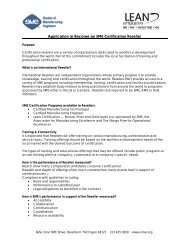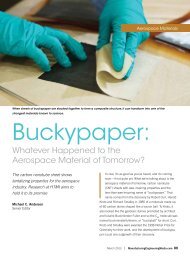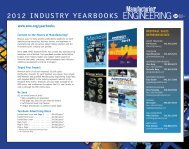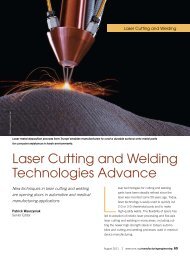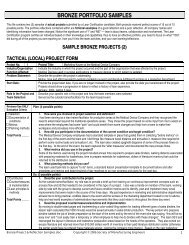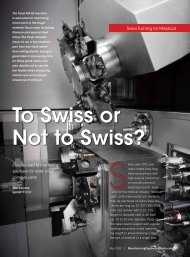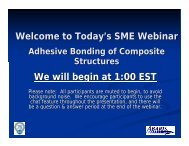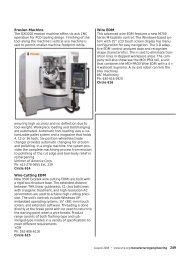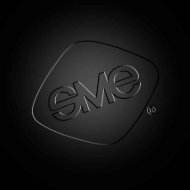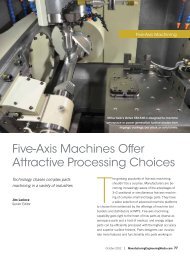The RAPID 2013 Conference & Exposition Directory - Society of ...
The RAPID 2013 Conference & Exposition Directory - Society of ...
The RAPID 2013 Conference & Exposition Directory - Society of ...
You also want an ePaper? Increase the reach of your titles
YUMPU automatically turns print PDFs into web optimized ePapers that Google loves.
ConferenCe Details<br />
4:30–4:55 pm<br />
Panel Presentation<br />
Moderator: Ryan Larson, Nike Inc.<br />
Panel Participants:<br />
Dave Abbott, GE Aviation<br />
Chris Gravelle, Bell Helicopter<br />
Garrett Grindle, Human Engineering and Research Laboratories<br />
at VA Pittsburgh<br />
Jim Kor, KOR EcoLogic<br />
This panel is composed <strong>of</strong> experienced practitioners and users <strong>of</strong><br />
additive manufacturing to build parts. <strong>The</strong> discussion will include<br />
benefits and challenges <strong>of</strong> bringing additive manufacturing<br />
into production, printing final parts, and how the finished parts<br />
contribute to lower labor costs, speed up assembly times, and<br />
increase final product quality.<br />
Additive Manufacturing Research<br />
1:30–5 pm<br />
Learn about the efforts to advance the uses <strong>of</strong> additive<br />
manufacturing technologies. A variety <strong>of</strong> processes and<br />
materials will be covered.<br />
1:30–1:55 pm<br />
Laser Additive Manufacturing <strong>of</strong> Pure Copper<br />
Federico Sciammarella, PhD, Assistant Pr<strong>of</strong>essor,<br />
Northern Illinois University<br />
<strong>The</strong> deposition <strong>of</strong> pure Copper via additive manufacturing poses<br />
some difficult issues. This presentation highlights the additive<br />
manufacturing (via LENS) work being done in parallel by the Laser<br />
Materials processing group at the National Laser Centre and the<br />
Macro/Micro Manufacturing Lab at Northern Illinois University.<br />
At this stage, deposition <strong>of</strong> higher than 2 to 6 mm was not possible<br />
due to the high conductivity <strong>of</strong> the first few deposited layers <strong>of</strong><br />
Cu. <strong>The</strong> high reflectivity also makes it difficult to build beyond this<br />
threshold level <strong>of</strong> layers as most <strong>of</strong> the light is reflected back,<br />
thus reducing the amount <strong>of</strong> energy absorbed by the melt pool.<br />
Some further efforts were carried out at NIU which involved preheating<br />
the substrate prior to deposition, it is anticipated that this<br />
may increase the deposition amount.<br />
2–2:25 pm<br />
Powder-Based Electron Beam Additive<br />
Manufacturing—Process Modeling with<br />
Applications to Novel Overhang Support Designs<br />
Kevin Chou, PE, ASME Fellow, Pr<strong>of</strong>essor, University <strong>of</strong> Alabama<br />
This presentation will discuss the powder-based EBAM<br />
technology. In particular, modeling <strong>of</strong> the EBAM process physics,<br />
by finite element (FE) analysis, will be addressed. <strong>The</strong> key points<br />
<strong>of</strong> the model will be elucidated using different examples, and<br />
process improvements derived from FE simulations/analyses will<br />
be demonstrated. One improvement is novel overhang support<br />
structure designs, which will eliminate the need <strong>of</strong> mechanical<br />
ways for support removals, and thus, simplify post-processing<br />
and enhance EBAM performance. <strong>The</strong> study demonstrates<br />
the powerful potential <strong>of</strong> FE modeling in studying the EBAM<br />
fundamentals and in capturing the complexity <strong>of</strong> the process,<br />
which in turn helps understand and advance metal-based rapid<br />
manufacturing technologies.<br />
2:30–2:55 pm<br />
Modeling and Validation <strong>of</strong> Residual Stress and<br />
Distortion in Direct Metal Deposition Processes<br />
Michael F. Gouge, Graduate Research Assistant,<br />
Penn State University<br />
Direct metal deposition processes are becoming increasingly<br />
important in the repair <strong>of</strong> high-value components. Unfortunately,<br />
the high temperature gradients experienced by the deposited<br />
material, as well as the substrate material during processing, lead<br />
to the formation <strong>of</strong> high levels <strong>of</strong> residual stress and distortion.<br />
In this work, thermo-mechanical finite element analysis <strong>of</strong> the<br />
process is performed using a moving heat source model for the<br />
multilayer laser cladding <strong>of</strong> Inconel® 625 at a laser power <strong>of</strong><br />
2500 W on 12.5-mm thick plates. Both powder and wire-fed metal<br />
deposition methods are evaluated with depositions paths in both<br />
longitudinal and transverse orientations. In order to validate<br />
the modeling results, in-situ temperature and deformation<br />
measurements are performed using pre-placed thermocouples<br />
and by fixturing the plate on one end and measuring deflection on<br />
the opposite end. <strong>The</strong>se results are validated using pre- and postprocess<br />
coordinate measurement machine (CMM) measurements<br />
at several points on each plate and residual stress measurements<br />
made using the blind hole drilling (BHD) method. Both layer-based<br />
42 sme.org/rapid





